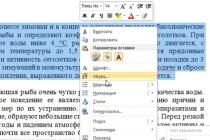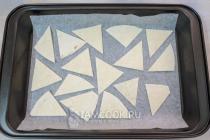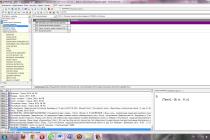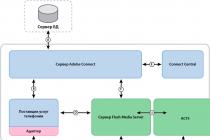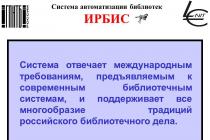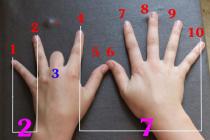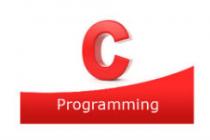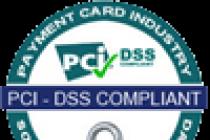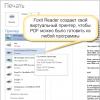Hello my dear readers. Today I want to talk to you about a specific problem. There are times when the drive does not open on the computer, that is, you cannot remove the disc from the CD / DVD drive. This can happen for various reasons. For example, you have a power outage at your home, and some important disk is left in the drive, which is immediately required to be returned.
The drive may also stop working due to a sudden power surge. It happens that the button for ejecting the disc from the drive is simply jammed, and it is not pressed.
On my old drive, I had cases when the tray pulled out quite a bit, buzzed for a while and moved back. I just helped him move out with my hands, pulling him out with two fingers.
All these problems are, in fact, very simple to solve. To eject the disc in emergency mode, you need some solid wire. If you do not find the wire, do not despair, use a needle, pin or paper clip - they will surely be at your fingertips.
There is a small hole on the front panel of any drive, you can clearly see it in the figure below. It is also intended for emergency ejection of disks from the drive.
So, we figured out why the drive does not open, now let me show you what to do when the drive does not open.
How to open the floppy drive
Gently insert the needle into the hole until we feel that we have rested against the lever. You must hold the needle straight to get on the lever inside the drive.

After about 1.5-2 cm, this very lever will be felt. You need to gently press down on it with a needle. As you press down on the lever, the drive will slowly slide out. Continue pressing until you can grab the tray with your fingers.

Now, by hand, we pull the tray out to the end, calmly remove the disc from it and gently push it back in, or you can press the button to close the tray. The most important thing with such an emergency ejection of a disc from a drive is to be careful not to damage the drive mechanism inside.
I hope you will not need an article on how to remove a disc from a CD / DVD drive in emergency mode, but just in case, I told you about it.
If you: recently repaired your computer, dropped your computer or hit it, then the floppy cable may be disconnected. You can read more about this in the article: "" (information is almost at the very end of the article).
See you soon!
P.S. : By the way, here's a good example of how to get a disc out of the drive:
A disk stuck in a laptop or computer drive can be a big problem, especially for the impatient.
If you are a laptop owner and often use CDs or DVDs, then at some point they can get stuck.
In some cases, the extraction process is relatively simple and painless.
In others, large-scale repairs must be carried out to fix the problem.
Removing a jammed disc with a paperclip
Paper clips can be scattered around your home or office - find it and straighten it. Then insert the tip into the small hole located on the front of the drive.
Slotted disc loading
If your laptop has a slot loading, then unlike the tray drive, you need to lift the laptop and point the drive down to remove the mini-CD or mini-DVD, press the "Eject" button while gently shaking.
Then, according to the law of gravity, it should fall out. If this proves ineffective, you can try to remove it with double-sided adhesive tape by winding it, for example, on a business card and inserting it into the drive.
Hardware problems
You will not be able to eject a disc if there is a physical malfunction inside the drive. In these cases, replacement may be the only option.
If building a disk is a common hardware lock, you can remove it by disassembling the drive, only in a laptop it is much more difficult than in a computer, but you can do this procedure yourself.
Mac users
If you have a Mac system, use your mouse to drag the disk to the trash can.
Then the "ejection" will be triggered and the disc should be ejected when you release the mouse button.
If that doesn't work, open Terminal.app and type drutil extract - very often this trick works.
As a last resort, you can try to restart the computer while holding down the mouse button.
If none of these methods work, then the disk is probably physically stuck and you should contact the Apple service. Good luck.
Most Makovodov sooner or later have a problem when his favorite CD or DVD disc does not want to leave the limits of the MacBook in any way. Macs, unlike PCs, have slot-loading drives and it can be difficult to remove the disc in the usual way, since there are no physical buttons, as well as an emergency withdrawal button. According to some employees of the service centers, the problem lies in the protective rubber bands that are too tightly adjacent to each other, although sometimes the problem may be software.
We try absolutely all known methods.
How to eject a disc
- Drag the disk icon from the desktop to the trash can.
- If you have another operating system installed in parallel, try entering and extracting software-capable from it.
- Open Programs -> Utilities -> Disk Utility. Select your CD / DVD drive on the left, click Eject. The same can be done through iTunes, or another program for recording, copying, viewing, listening to files from CD or DVD discs. There are also programs specially designed to eject stuck disks, such as the Force Eject Mounted Volumes script.
- For geeks, their favorite. We launch the terminal. Trying to execute the commands “drutil eject” or “hdiutil eject -force‘ / Volumes / DISK NAME ”’ or “diskutil eject / Volumes / DISK NAME” (without quotes).
- If your MacBook has an Eject key on its keyboard. Restart your computer while holding down the Alt (Option) key. When the disk selection screen appears, release Alt and press Eject.
- Lift the laptop, turn it with the drive down and press the Eject key, maybe Newton's law will help you.
- If a stuck disk prevents the computer from loading the operating system, then: turn on the computer and leave it for 10-15 minutes, perhaps the computer will spit out the disk itself.
- If the computer does not see the CD / DVD drive, then you can try to put it to sleep and wake it up again (as an option to restart), sometimes the Eject command in iTunes helps.
- Perhaps the problem is your Mac overheating. Set the laptop aside for 20-30 minutes in a cool place and try removing it again.
- We boot the computer while holding down the right mouse button or trackpad. After loading the laptop, the disk should pop out by itself.
- In extreme cases, you can try to gently pick up the disk, for example, with tweezers or a floppy disk shutter (if you can find a floppy disk in the hiding places). Be careful, this operation can damage your computer or the disk itself.
If none of the above methods did not help, then you are on the road to service center, or self-parsing (at your own peril and risk) of the laptop.
Disk can get stuck in the drive for a variety of reasons, ranging from a power outage in the house, to mechanical damage to the CD-ROM itself. In any case, the disc must be removed, and this task is absolutely doable.
You will need
- a needle, a pin, any thin, straight object of this type.
Instructions
1. Make sure the jammed disc is not being used at the moment, i.e. programs or data from this disk are not open. Otherwise, quit all programs on the disk.
2. Try pressing the Media Eject key on your computer keyboard (the button with the underlined up arrow in the upper right corner, or F12).
3. If you cannot eject the disc, try pressing the Media Eject key while holding down the Fn button (for laptop computers).
4. If all of the above doesn't work, try dragging and dropping the disk icon into the Trash can easily.
5. If that doesn't work, restart your computer. For Mac computers, press the mouse or trackpad button at a time and use Restart from the Apple menu in the left upper corner desktop.
6. To further attempt to eject the disk, you will need to restart the computer by simultaneously pressing four keys at once: Command + Option + O + F. After opening the Welcome to Open Firmware window, release the keys and enter the eject cd command and press Return. It is assumed that later the disk will become available for ejection, and the system ok message will appear on the computer screen under the command entered. To continue with a typical boot, type mac boot and press Return (for Mac computers.
7. If you do not have the desired total, locate a small round hole with a diameter of 1.0-1.5 mm on the front of the drive. Insert a needle into it at a right angle and push. When placed on the lever, the CD-ROM will open and the disc will become available.
A rough disk is one of the most vulnerable elements of a PC. When replacing this device, you need to be very neat. Besides, the main thing is to positively prefer the newest hard drive.

You will need
- screwdriwer set.
Instructions
1. Disconnect the power supply cable from the mobile computer. Unplug your laptop. Tip the device over and remove battery... Study in advance the type of attachment of this battery.
2. Unscrew the necessary screws holding the battery. In modern laptops, special latches are used. Move all available sliders to the Open location. More often than not, the latches are marked with special signs in the form of an open lock.
3. Remove the battery from the mobile computer case. Locate the compartment prepared for storing the placement of the disk. Remove the screws and open the cover of this compartment.
4. Now remove the screws holding the hard drive cage. Carefully move the hard drive away from the connectors. Pull the rough disc out of the case. Examine the device interfaces.
5. If you see a lot of individual pins, then this rough disk owns the IDE interface. SATA hard drives have two flat connectors. Purchase equipment of the required format.
6. Remember that for mobile computers, you need to use rugged 2.5-inch drives. After receiving a new hard drive, secure the device to the carriage using the remaining screws.
7. Install the rough disk into the mobile computer bay. Connect the equipment to the connectors by sliding it in the desired direction. Screw in the control screws that will not allow shutdown hard disk while using the laptop.
8. Close the compartment cover. Secure it with screws. Turn on your mobile computer and open BIOS menu... Make sure the newest rough disc is identified and available for use. Proceed with the installation operating system to the latest drive. Be sure to format the newest hard drive before use.
In the vast majority of operating room applications Windows systems graphics used in toolbars and menus are stored in the module's source segments in icon format. Windows icons are sets of image-mask raster pairs, thereby allowing you to save several icons of different resolutions in one file using transparency. There are tons of free icon collections available today. But occasionally, for research and experiments, it is required to stretch icon from the module present.

You will need
- Resource Hacker program.
Instructions
1. Open the PE module in Resource Hacker. In the main menu, click on the "File" item. Then select the “Open” item. A file open dialog will be displayed. Change it to the directory where the file you want to extract is located icon... Select the file from the list showing the directory contents. Click the "Open" button.

2. Search for the icon you want to extract. After the PE module is loaded, a panel representing a tree control will appear on the left side of the application window. It will contain information about all the sources of the module in the form of a hierarchical representation with the grouping of sources by type. Expand the “Icon” section. Then expand the subsections of this section step by step. They will display elements whose names will correspond to the numeric identifiers of the icons. Select elements step by step. View icon images in the far right pane. Follow the similar steps for the “Icon Group” section.

3. Start saving the detected icons. Highlight the source you want. Click on the “Action” menu item. In the displayed submenu, select the item corresponding to the operation of saving the selected icon. The item name looks like: “Save [section: subsection: identifier]”.

4. Save icon... In the “Save resource to…” dialog that appears, specify the directory where the icon file will be saved, as well as its name. Click the “Save” button.

5. View the saved icon... Use the probabilities of image viewers, Windows explorer, or the likelihood of a file administrator. Make sure the extracted icon was saved correctly.

Related Videos
Note!
It may be illegal to extract, modify and distribute copyrighted icons. Always familiarize yourself with the license for software and the graphic elements used in it.
Helpful advice
Use specialized software to view and edit the extracted icons, such as Icon PRO, Microangelo, aWicons PRo.
Various unpleasant incidents happen in life. And it is not always possible to immediately consult a doctor in order to receive qualified medical assistance. If suddenly there was a situation when you drove a splinter in the form of a needle into a certain part of the body, then you need to do it immediately.

You will need
- - tweezers;
- - glue, tar or resin.
Instructions
1. Before everyone, keep in mind that unskilled picking in the body in order to pull out such a splinter can provoke subsequent complications and the formation of a secondary infection. However, in case of penetration of a needle into the body, it must be done immediately. True, immediately notice all the horror stories that the needle, having got into the flesh of the body, immediately begins to travel through the veins and comes to the heart, which can provoke death. Experts call these stories an ordinary bird, however, they do not deny that a needle must be pulled out of soft tissue immediately. However, cases of needle migration along the soft tissues of the body did occur.
2. If the needle or part of it has not completely entered the body and is quite close to the surface of the skin, then it is allowed to use various methods, with the support of which it is allowed to get it. For example, it is allowed to use ordinary tweezers, with the help of which you grab the tip of the needle, stretching the skin. If you get a needle succeeded - the task was eliminated. Disinfect the area where the splinter just happened, and don't worry.
3. Another way is to grease the place where the tip of the needle sticks out with strong glue, tar or resin. When the layer dries up, together with it, it is allowed to remove an unpleasant splinter from the body. If you pull out such a splinter to a child, then try, before everyone, to cheer him up so that the baby relaxes as much as possible. Then the splinter will come out much easier and faster.
4. All of the above methods are suitable only when the tip of a whole or broken needle is visible from the body with the naked eye. If the needle has entered the body entirely, then immediately you need to go to an appointment with an expert. Have the surgeon take a good look at you, even if there is little doubt about the likelihood of a needle hitting your body. Before the doctor scrupulously examines you, try not to move unnecessarily: a needle is a solid business.
5. The doctor will first take an X-ray, and later will carry out a surgical tying, with the help of which the needle will be removed from the body. If necessary, the doctor will administer anesthesia, and the operation will be swift and rather primitive.
Inserted disk into the drive, they wanted to work with him, but he turned out to be "vicious". The disk drive refuses to release it, and you cannot restart the computer for some reason. Sound familiar? This problem is solvable.

You will need
- Unlocker program, needle or paper clip.
Instructions
1. If by simply pressing the "open / close" button on the drive it is impossible to eject the disc, then there is a very small chance that the task is in this button itself. In order to exclude or verify this option, use programmatically extraction - open the "My Computer" window by double-clicking on it on the desktop. In the window on the icon floppy drive right-click and select the "Extract" command in the appeared context menu.
2. If no reactions happened, it is absolutely acceptable that this or that file on the disk is occupied by some system process, maybe even a virus. In order to check this, use the Unlocker program. If it is not there, then by all means install it, it will be very useful for you to solve many problems.
3. After installing the program, the Unlocker item will appear in the context menu of the drive, click on it. The program window will open, in which there will be information about which process is using this or that file on the disk. If the program showed a list of files and paths to processes, then the files are locked and, as a result, the disk is not ejected.
4. To unlock the files, at the bottom of the program dialog box, click on the "Unlock All" button and try to eject the disc. If all else fails, then move on to the further method.
5. Take a paperclip and straighten it (you can also use the back of a thick needle). There is a small hole on the front of the drive (it serves for emergency opening of the tray), insert the end of a paper clip there and push inward. The tray lock will loosen and you can pull it towards you and remove the disc.
Helpful advice
If none of this helps, or a similar snag repeats regularly, then remove your drive and take it to a repair service.
People who work a lot at the computer, sooner or later, face breakdowns. keyboards... Some keys can start to stick, move crappy in their cell. Patterns may be erased on some keys. Take your time to throw out your keyboard! She is allowed to give a second life.

You will need
- Operation manual, a sheet of paper, a set of screwdrivers.
Instructions
1. Check with your supervisor keyboards... If you are unable to find the bosses in paper form, then visit the website of the manufacturer of your keyboards... On it you will be able to find the administration of your keyboards electronic. In it you will be able to find a diagram of the structure of your keyboards... With her help, you will be able to realize how much cooler than anyone is to disassemble your keyboard and find all the noticeable fasteners and bolts.
2. You also need to redraw the location of the buttons, so as not to confuse them in the future. To do this, take a sheet of paper, draw a diagram on it keyboards and label all keys. It is also allowed to find such a scheme on the Internet and print it on a printer.
3. Tip the keyboard with the keys down. Unscrew all bolts. You also need to unscrew the bolts that may be on the front. Later, neatly open all the latches and gently pull the back panel towards you. She needs to be filmed. Later, you need to take out two layers. Find a small socket with diodes. It is usually secured with one small bolt. Unscrew it and dismantle it.
4. Now you need to start at ease with the extraction of the keys themselves. If all the keys sit in separate slots, then you need to carefully press the key with your finger from the back side. The latches will be compressed and the key will be released from the mount. You need to do this procedure very smoothly and neatly, so as not to damage the latches by accidental movement. If the key sheet is solid, then you need to find the latches or bolts with which it is attached to the body keyboards... Unscrew the bolts or open the latches and neatly remove the canvas from the grooves. Assembly keyboards must be manufactured in the reverse order.
Probably you were more closely faced with such an unpleasant situation when a different letter was assigned to one or another partition of one hard disk or dvd drive. It turns out that the alphabetic priority in the name of the sections can be changed using standard tools Windows.

Instructions
1. Why is this happening and on what thesis are the drive letters separated? If you installed the operating system on a clean, unpartitioned, coarse disk, the newly created partitions take on the letters that remain tighter. As usual, drive "C" is the system drive, and the letter "D" is assigned to the drive (drive). Also, such a case with unequal assignment of letters to disks can occur when installing other storage media, for example, flash drives or card readers (some can reserve up to 4 disks).
2. To change the drive letters originally assigned by the system, you need to open the "Computer Management" applet (for Windows XP). Click the "Start" menu, in the list that opens, select "Control Panel". After that, go to the "Administrative Tools" section and select "Computer Management".
3. You will see the "Computer Management" applet. Select "Disk Management" and right-click on the dvd drive (floppy drive). In the context menu of the drive, select the item "Change letter drive or path to drive ".
4. In the window that opens, click the "Change" button, then click the drop-down list "Assign letter disk (A-Z) "and select any free letter... If the desired letter is occupied by one of the hard disk partitions, select any letter, so that later the necessary was allowed to be obtained when changing the letters of the hard disk partitions.
5. Later, the metamorphosis of the letters of the hard disk partitions, return to the settings of your drive - now it is allowed to change the former letter floppy drive to the desired one.
6. In the Windows 7 operating system, this operation is similar. To quickly launch the Disk Management applet, click the Start menu, type diskmgmt.msc in the search bar. In the search results, click on the detected file. If you cannot perform this action, you can do this: click the "Start" menu, select "Control Panel", in the window that opens, go to the Administrative Tools section and start "Computer Management".
7. All steps for changing drive letters or drive letters are similar to the case described for the example of the Windows XP operating system.
Imagine the situation that you inserted a disc into your drive, and it is not only unreadable, but also slows down the work of every computer. It is not possible to remove it from the drive by ordinary methods. We'll have to use other methods.

Instructions
1. Check the drive button to remove disk from computer... The probability of a button malfunction, albeit hefty is small, but still there. In this case, only the button does not work in the drive, the rest of its systems must be in perfect order. To verify this or discard this version, double-click on the "My Computer" icon on the desktop.
2. Right click on the drive icon. In the context menu that appears, select the "Extract" item. If the tray slips out, you can remove disk and start dealing with the faulty button. If the miracle hasn't happened, keep looking for options.
3. Install the Unlocker program on your computer. You will need it in order to check if any of the files are busy on disk e by a system process or a virus program. It is possible that this is why the drive does not open. After the program is installed, go to "My Computer".
4. Call the context menu of the drive icon again. Now it has an item called Unlocker. Click on it with the left mouse button. The program will start. Its window will display information about which file with disk and which application or process is busy. If the path is specified, then this file blocked.
5. In order to get disk from the drive, click on the "Unlock All" button. The list will be cleared. If you still can't get it later disk, try another option.
6. Take a thin needle or paper clip (the paper clip must be unbent and straightened). Locate the small round hole on the front of the drive. It should be under the tray, next to the button. Insert the needle in there and apply slight pressure. Without releasing, pull the tray towards you.
7. Pull carefully so as not to break a loosened retainer. If this method did not bring the desired result, then you need to contact the service center for help from experts, or you can easily buy the latest drive for your personal computer.
Related Videos
One of the main collations of an optical drive is speed reading disks. The higher it is, the faster will be the recording of information from the media to the rough disk of the computer. But there is a small flaw here: the higher speed drive, the noisier it runs. But if for you this defect is insignificant and it is much more important for you, so that the recording is carried out faster, then you can increase speed floppy drive .

You will need
- - CDSpeed v2.0 program;
- - Speedlock beta-2 program.
Instructions
1. Minimum and maximum speed limits floppy drive depend on the specific model. You will not be able to set more high speed than the one listed on the data sheet for your optical drive.
2. To increase the speed of the drive, it is necessary to use special software. One of the most primitive and comfortable programs is called CDSpeed v2.0. Download this utility from the Internet - it is free. Unpack the archive with the program, there will be only one file. The utility does not require installation - primitively click on this file with a double left click of the mouse.
3. A small window will open. There is an arrow at the top of the window. If you click on this arrow, a list of connected drives will appear. In this list, select the drive speed which needs to be increased. Of course, you only need to do this if you have multiple drives installed on your computer.
4. The maximum is written in the lower left corner of the window. speed optical drive, say, Max 48. Nearby there are two arrows, one of which points up, the other - down. The current speed drive. Click on the arrow pointing upwards with the left mouse button. Speed floppy drive will be increased by 1. Thus, you can increase it as much as you need. Later on, click Exit. The program window will close.
5. Another tiny utility for adjusting the speed is called Speedlock beta-2. It's also free. To start it, you just need to unzip it and double-click on the executable file. A window will open. In this window, find the line Preferred. There is an arrow next to the line. Click on this arrow and increase speed drive, then click Apply. Later this speed the optical drive will be enlarged.
When repairing or improving the computer, the user may need to remove floppy drive from the system unit. This procedure is quite primitive and can absolutely be done on your own.

Instructions
1. Before starting work, be sure to unplug your computer by unplugging the power cord. Then remove both side panels system unit, usually this requires unscrewing the fixing screws located in the back of the case. On some computers, you will need to remove the bezel to remove the side panels.
2. Disconnect from floppy drive loops, remembering their location. Power connector on IDE floppy drive x can be quite tight, gently wiggle it from side to side to extract. After disconnecting the cables, unscrew on both sides floppy drive screws holding it in place. Now carefully remove the device from the system unit.
3. Installation floppy drive is performed in reverse order. If you are changing an IDE floppy drive, and you have another device on the same cable with it, check the location of the jumper. On the device that is at the end of the loop, the jumper must be set to the master location. On the one connected to the middle connector, put a jumper in the slave location. If you put a drive and a rough disk on one ribbon cable, the final one must be connected to the end of the ribbon cable.
4. When installing devices with a SATA interface, you do not need to set jumpers, because it is impossible to connect more than one device to a SATA cable. When connecting the loops, do not use force: if the connector does not fit into the connector, it means that you have inaccurately combined them or are trying to insert them opposite.
5. Most loops have special keys that do not allow connecting the connector abnormally. If there is no key, the first core should be found on the IDE loops; it is highlighted in red or blue. After that, look at the numbering of the pins on the connector of the connected device. The first core of the loop must be connected to the first contact.
6. If you are replacing the old IDE- floppy drive want to put SATA, check if there is motherboard the corresponding connectors on your computer. If so, pay attention to the power connectors - they are different on SATA drives. If your PC's power supply unit does not have the required connectors, purchase a power adapter for SATA.
CD is an optical disc for recording and storing data. A CD drive is a device that writes and reads data from a CD. After reading or writing, the disc must be removed from the drive.

Instructions
1. To eject the CD, press the button on the front of the drive. In normal mode, the tray in which the disc is placed is pulled out later.
2. It is allowed to get the disc by applying Windows tools... Double-click the left mouse button on the "My Computer" icon. Locate the CD drive icon, right-click on it to open the context menu and select the "Eject" option. Later, the drive tray should slide out.
3. If you cannot open the CD-drive, check - it is permissible, it is used by data reading or writing programs. Wait for the conclusion of the work of these programs, then try again. It is possible that the program that accessed the CD hangs. Use the keyboard shortcut Ctrl + Alt + Delete in order to bring up the process manager. In the "Applications" tab, see what tasks are used by the computer sources. Sweep up the frozen program and click End Task.
4. If no programs are accessing the CD and the tray still does not open, restart your computer and try to open the drive again. If you hear the classic sound of the unwinding spindle, then the malfunction is not too serious - most likely everyone is jamming the tray.
5. Take a sewing needle or a hefty fine knitting needle. Locate a hefty small diameter hole on the front of the CD. With the eye forward, insert the needle into the hole perpendicular to the plane of the panel and press down on the tray lock. Later, the tray should slide out.
6. If the drive does not open, take a flat, sharp object, such as a scalpel or a utility knife. Use a needle or a knitting needle to press the lock on the tray, and with a knife try to pry the door and pull it towards you. After you open the drive in this way and remove the disc, restart the computer.
In order to install the disc, you first need to take a set of tools for the computer and the rough disc itself.

Then do backup information that is on a dilapidated drive. In the event of any breakdown, you can lose all information from the hard drive (rough disk). Next, you need to turn off your computer, and disconnect the power from the network. Remove the side of the case. We are looking for a device that must either be replaced or installed. As usual, the rough disk is placed a little higher than the drive in the case. Place the rough drive next to the bezel with the connectors facing the back of the bezel, then unplug the power and data cable on the back of the drive. Pull out the connector carefully, shaking it a little, so as not to damage anything. Occasionally, hard drives are mounted in the case with the support of a metal screen bracket. Then you should pull out the disc together with the bracket, and then remove the top cover, called the screen. After that, you need to pull out the screws (4-8 pieces), with the support of which the rough disk is fixed in the case. Now you need to install the disk in place of the old drive. The disc should sit tightly, but without effort or distortion. There should be free space for cables on the back of the hard drive. Make sure that the latest drive does not cling to other hardware. The drive connects to the computer with support for 2 cables: a cable from the computer's power supply and an interface cable that connects to the IDE connector. Make sure the connector fits snugly into the socket. If the connection is wobbly, then your drive will malfunction or not work at all. Make sure that the connected cables are in place and not pinched. If everything is typical, we put the housing cover back in place. We connect your disk and the computer to the network.
Diskette with a skewed sliding flap can get stuck in the drive. It cannot be pulled out by pressing the button. To remove the elastic disc, the drive will have to be removed and disassembled.

Instructions
1. Shut down the operating system and wait for the mechanical shutdown of the computer. De-energize system unit and all the periphery. Remove both covers, and then separate both cables from the drive (one of them goes from the motherboard, the other from the power supply). Be sure to sketch how they were connected.
2. Remove the screws on both sides that secure the resilient disk drive to the chassis. Pull it either towards you or, if the case is equipped with a decorative strip over the drive, in the opposite direction. In the second case, do not touch the video card - it is permissible, for this it will have to be temporarily removed.
3. Remove the top cover from the drive. If it is held in place by screws, remove them beforehand. Using a screwdriver, forcibly return the sliding sash to the center position. Later, use the same screwdriver to lift the floppy disk and direct it towards the slot. Later on, pull it out with your hands.
4. Examine the drive for foreign objects: paper clips, floppy disk springs, etc. Shake them out, then try to insert a serviceable floppy disk into it several times, and then remove it with the button. The mechanism must work distinctly. Close the drive cover, and then make sure that the mechanism works as before.
5. Install the drive in the computer in reverse order. Connect the cables to it according to the drawing you made earlier. Incorrect connection an interface cable can damage the port on the motherboard, and a power cable can irreversibly damage the drive itself. Close the system unit, turn on the power, wait for the OS to load and check the drive in action. If you need to read data from the floppy disk that you just removed, remove the flap and the spring, and then, without touching the magnetic disk, insert into the drive, do backup, then remove it. Do not use this floppy anymore.
Related Videos
Note!
After mechanical removal of the disc, a computer restart is required to correct the drive.
Helpful advice
The mechanical method of removing a stuck disk is universal and applicable to the vast majority of computers, regardless of operating system.
Almost all car CD players have one problem - stuck discs. Since they are installed inside the car itself, they can only be reached from one side, unless, of course, you are ready to remove and disassemble the player itself. A stuck disc in the player is a rather annoying problem. Fortunately, there are several options for dealing with this type of headache. However, notice that if you do something wrong, you can damage the player (or the disc will remain inside). In any case, the advice in this article does not replace the authoritative opinion of an automotive expert.
Steps
Using the power and eject buttons
Switch off the vehicle. Some players have a "force eject" feature designed specifically to eject a disc when other methods fail. Since this method eliminates direct penetration into the inside of the player itself, it is smart enough to start with this, - in any case, you do not lose anything. First of all, switch off the car if you have not already done so.
As soon as the car has calmed down, you must simultaneously press the "power" button on the player and the "eject disc" button and hold them for ten seconds. If your player supports the "force eject" function, the disc will pop out at the same time.
If that doesn't work, start the car again. Some CD players may not work while the machine is turned off. After turning it on, try also pressing and holding the same buttons: "Power" and "Force-eject".
Take a look at the player's instructions. In general, the combination of the above buttons is a single force eject command for all players, however many CD players may use other buttons to eject a jammed disc. If the problem still exists, check the instructions that came with the player, there should be information about the functions with which you can remove the disc.
Using an additional disk
- Turn on your player before starting. If you need to start the car for this, start it.
- Note: In this method, as in several others mentioned in this article, there is a risk of damage to both the stuck disc and the player itself. Be careful when inserting any foreign objects into the player. If you doubt your abilities, then it is better to contact the masters.
-
Insert the second disc into the opening 2-3 cm. This disc should be on top of the jammed one. You can feel the stuck disc by sliding over it with whatever you have in your hand.
While gently rocking the disc, press the Eject button. Thus, you are forcing the jammed disc to forcefully affect the mechanism of the player, which is responsible for ejecting the discs. When you feel that the jammed disc has started to come out, make sure that it does not get caught between the other disc and the edge of the disc opening.
- If that doesn't work, try slipping a disc under the jammed disc while gently lifting it up. Turntables can have different ejection mechanisms, so sometimes upward pressure on the disc may be more effective than the other way around.
-
Press lightly on the disc. Sometimes, pressing it lightly can help the disc rev up. If the turntable is closer to the top surface of the dashboard, repeat all steps of this method by pressing or tapping on the dashboard area neat but firm.
- Notice although this is successful, extreme care must be taken when tapping, as it can damage the sensitive parts in the center of the panel. This method is not recommended if GPS or something similar is installed between the player and the top of the panel.
Take a blank or just unnecessary disc. This method requires you to insert a second disc into the player. In order not to spoil the disc that you like, get out a blank disc or any other disc that you no longer really need.
Reconnecting the power supply
-
Record all radio and audio settings. This method is used if you cannot get the disc and your CD player will no longer turn on. The method consists in disconnecting and reconnecting the power supply of the player. At the same time, most players will lose all radio and audio settings, returning to the default settings. If you are a big fan of music in the car, be sure to record your Personal settings and you can restore them later.
Stop the car and open the hood. Working with electrical system vehicle, take all precautions to avoid electric shock. After stopping the car, remove the keys from the ignition switch, open the hood to access the battery.
Disconnect the negative terminal of the battery. The negative terminal of the battery is black, the positive terminal is red. In some cases, you may need a small wrench or pliers to loosen the nut and disconnect the wire.
Wait 10 seconds, then reconnect the terminal. Then start the car and try to remove the disc as usual. Disconnecting and reconnecting the power of the CD player may reset its factory settings, which, in some cases, may restore its eject function.
If the player still does not turn on, replace the fuse. Please refer to the user manual. Often the fuse box is located behind dashboard on the driver's side. Disconnect the battery. Remove the protective cover from the fuse box, replace any player fuse that may have blown.
Using a knife or chips and tape
- Note: Just like the other methods described in this article, this method carries the risk of damaging the stuck disc or the CD player itself. If you don't want to risk your property, take your car to a professional for repair.
-
Wrap the tape (sticky side out) over the edge of a spatula (or similar object). The tape should be strong, Gorilla tape will work well for good results. The spatulas are usually tapered, so the tape should not slide off. If you are using a different shape, such as a popsicle stick, glue the tape to the measure first, then wrap it around a few times, turn the tape over, and rotate it a few more turns so that it adheres firmly to the item.
Glue a piece of tissue paper to one side of the knife. A knife wrapped in duct tape will be difficult to fit into the player. The paper will smooth one side of the knife. Glue printer paper or colored paper to the knife and cut it with scissors to fit the knife.
Be careful not to get an electric shock. Insert a long flat knife or similar object directly into the player. Metal knives conduct electricity, so if you have a suitable piece of wood or plastic (like a popsicle stick), use it. If not, make sure the player is disconnected from the power sources, turn off the car, turn off the player and disconnect the negative terminal from the car battery.

